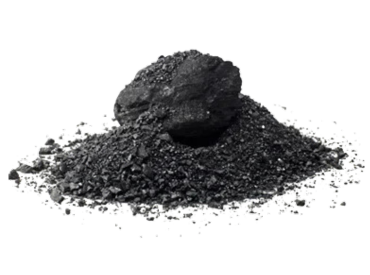Acid Washed Activated Carbon: Tailored Specifications for Optimal Performance

As a supplier of Activated Charcoal powder, we offer a cost-effective solution for maintaining AC effectiveness. Our expertise in sourcing Powdered Acid-Washed Activated Carbon ensures efficient, consistent, and durable performance. This product is primarily used in food decontamination, water purification, beverage production, pharmaceutical applications, and various aqua applications, including swimming pool purification.
Acid Washed Activated Carbon: Materials Used
Acid washed activated carbon is fundamentally made from the same carbonaceous source materials as regular activated carbon. These raw materials are typically organic substances with high carbon content, such as:
- Coconut shells: A very common and popular source due to the high hardness and microporous structure of the resulting activated carbon.
- Coal: Various types of coal, including bituminous, anthracite, and lignite, are used, yielding activated carbons with different pore size distributions.
- Wood: Different types of wood can be used, often resulting in activated carbons with a broader range of pore sizes compared to coconut shell-based carbons.
- Other carbon-rich materials: These can include agricultural byproducts like bamboo, nutshells, and even waste from paper mills, depending on availability and desired properties.
Acid Washed Activated Carbon: Production Process
The production process begins with the carbonization of these raw materials in an oxygen-deficient environment at high temperatures (typically 600-900°C). This process drives off volatile compounds, leaving behind a carbon-rich char with a rudimentary porous structure.
The char then undergoes activation, which significantly enhances its porosity and surface area. This can be achieved through two main methods:
- Physical Activation (Thermal Activation): The char is exposed to oxidizing gases like steam, carbon dioxide, or a mixture of both at high temperatures (800-1100°C). These gases react with the carbon structure, creating and widening pores, thus increasing the surface area.
- Chemical Activation: The raw material or char is impregnated with a chemical activating agent, such as phosphoric acid (H3PO4), potassium hydroxide (KOH), or zinc chloride (ZnCl2). The mixture is then heated to lower temperatures (400-700°C). The chemical agent aids in the development of the porous structure. After activation, the carbon is washed to remove the chemical agent.
The crucial difference that defines “acid washed” activated carbon lies in an additional post-activation treatment. Once the activated carbon has been produced through either physical or chemical activation, it undergoes a washing process using an acid solution, typically hydrochloric acid (HCl), though nitric acid (HNO3) or other acids can also be used.
This acid washing step is specifically designed to remove impurities that remain within the activated carbon structure after the initial activation. These impurities can include:
- Heavy metals: Such as iron, calcium, magnesium, and other metallic compounds that may have been present in the original raw material or introduced during processing.
- Inorganic salts and ash: These are mineral residues that can block the pores of the activated carbon, reducing its adsorption capacity and potentially leaching into the treated substance.
- Water-soluble ash content: Acid washing effectively dissolves and removes these components.
Following the acid wash, the activated carbon is thoroughly rinsed with water to remove any residual acid and dissolved impurities. Finally, it is dried to the desired moisture content and may be further processed (e.g., sized or packaged) according to its intended application.
In essence, acid washed activated carbon starts with the same carbonaceous materials as regular activated carbon but undergoes an extra purification step using acid to create a product with enhanced purity, lower ash and heavy metal content, and often improved adsorption performance, particularly in applications requiring high purity or dealing with specific contaminants.
Your Success is Our Priority, Backed by Dedicated Support: Our commitment doesn’t end with the purchase. Our knowledgeable and responsive support team is here to assist you every step of the way, from product selection to implementation and beyond, ensuring your complete satisfaction and optimal system performance.
